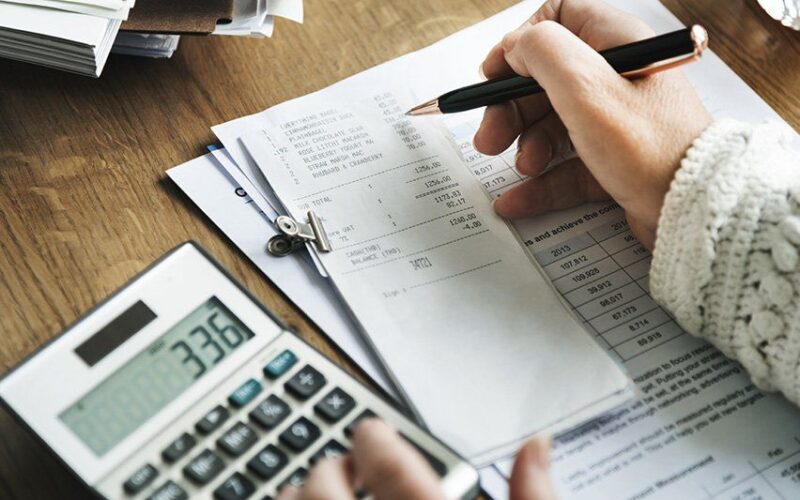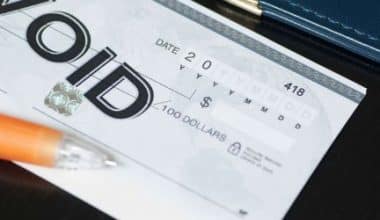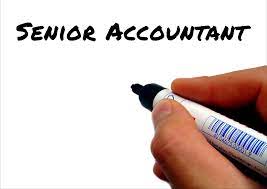Creating and keeping records is of utmost importance. Accounts and records are essential for being adequately informed. This content will provide information on how to calculate depreciation expense from the balance sheets, income statement, and rental property using the straight line and the double-declining method.
Overview
Depreciation is the term used to describe the reduction in the monetary worth of an object as it decreases with time, due to use, wear, and tear. More so, it can be a term used to describe how much of an asset’s value has been used, as it enables companies to create revenue from the assets they possess by paying for them over time.
Depreciation occurs as physical assets drop in value as time progresses, and this results in the depreciation expenses that appear on the company’s income statements and balance sheets.
The cost of a depreciated item for a single year is known as depreciation expense, and it reveals how much of the asset’s value was used up in that year. Typical examples are cars, furniture, computers, and trucks. More so, other fixed examples are Buildings/structures, office equipment, machinery, and other fixed tangible/physical assets. There are types/methods of depreciation a company/firm can adopt to help them ascertain the worth of a physical asset and thereby generate revenue from such property.
Types of Depreciation Method
The following are the various types:
- Straight-line depreciation
- Double declining balance
- Double Decreased balance
- Addition of the years’ digits and lastly
- The Manufacturing unit
Information Used in Calculating Depreciation
To calculate depreciation, the following are necessary:
- The period during which the property/asset will be useful.
- An asset’s salvage value or price is its rescue price after it has reached the end of its useful life or has served its purpose.
- The asset’s cost/price also includes taxes, delivery, and installation costs.
What Is Depreciation Expense?
Depreciation expense is a non-cash expense that businesses subtract from their profits. It is similarly, the amount of depreciation that a capital asset will accrue throughout an accounting period in dollars.
Above all, depreciation expenses are calculated on the premonition, that assets like machines, equipment, software, and vehicles have a useful life span and also that the worth of those assets will drop with time.
How to Calculate Depreciation Expense
Depreciation expense is the cost of a depreciated item for a single year, As a result, the asset’s used-up value in that year can be derived.
Depreciation is calculated using several methodologies, chosen to meet the type/functionality of the asset or property purchased. For instance, trucks, depreciate quicker as the year runs by than a building. Therefore; making the accelerated method best for calculating the depreciation expense for a truck and the straight-line method for a building.
The major depreciation accelerated methods are the Double Declined balance and the Addition of the years’ digits depreciation method. Many organizations prefer using accelerated methods in calculating depreciation rather than straight-line methods. The accelerated approach charges a high rate in the early years of an asset’s useful life and writes off lesser sums subsequently.
A Typical Example of How to Calculate Depreciation Expense Using the Double-Declining Method
Let’s say a company (MLP inc.) spent $500,000 on a device. They calculate the machine’s functional life to be twenty years, with a salvage value of $21,000.
Formula: (2 X Depreciation rate) X Cost of asset
Purchased price for the asset: $500,000
Salvage price for asset: $21,000
The lifespan of the asset: 20years
To continue you have to get the depreciation rate and here is its formula :
1/ lifespan X 100
Here it will be (1/20) * 100 = 5%
2X5%=10%
Ist year depreciation = $500000 X (10%) = $50,000
2nd year depreciation = $450000 X (10%) = $45,000 etc.
How to Calculate Depreciation Expense From the Balance Sheet
Generally, a balance sheet shows what a company possesses and owes, including how much its shareholders have contributed/invested.
Depreciation is a sector on the asset side of the balance sheet that shows how the value of physical assets decreases over time. Furthermore, the balance sheet has a formula which is liabilities + shareholders’ equity = assets.
Altogether, the balance sheet shows the financial health worth/value of a company.
A portion of the price paid to acquire long-term assets is distributed as a depreciation charge on a company’s earnings statement, which spreads an asset’s expenses throughout its useful life. Thus; the depreciation expense decreases the company’s income/worth on the income statement column and then increases the accumulated depreciation on the other side of the sheet. Therefore, this causes a reduction in the cost/value of the long-term asset on the balance sheet.
Meanwhile, to calculate depreciation expenses from a balance sheet for an accounting period. You calculate the change in the accumulated depreciation on the balance sheet.
Hence; to calculate
- Firstly, get the depreciation expenses from the preceding accounting period in the balance sheet first
- Also, get the depreciation expenses from the current accounting period in the balance sheet and,
- Then, subtract the depreciation expenses from the preceding balance sheet from the depreciation expenses from the current balance sheet.
How to Calculate Depreciation Expense From Income Statement
An income statement is a report which portrays the income, expenses, gains, and losses of a business, it also gives an update on a company’s financial health thus; it shows the gross profit of a company, how much a company spends, on what and also if a company is in debt. You create an income statement on regular basis.
An income statement has a formation peculiar to it and it comprises the following:
- Gains
- Depreciation
- Sales
- Gross profit
- Expenses
- Net worth
The formula for calculating the net income:
Net income = (gains+revenue) – (expenses+Losses)
You can calculate depreciation expense from the income statement following these steps:
Step 1
- Move to the column for expenditure, there should be a space for depreciation but if not calculate depreciation from the column in the manufacturing expense, sales, or more non-cash expenses depending on the type of business or firm.
Example:
| Manufacturing expense | Electric Generator |
| Sales expense | printer, laptop, desk, chairs, truck |
Step 2
- Add up the depreciation expenses from the above-mentioned assets and compute all non-cash expenses.
Step 3
- Finally, take the summed-up depreciation from the current year and subtract it from the summed-up depreciation from the preceding year. The answer you get is how you calculate the depreciation expense from the income statement.
How to Calculate Depreciation Expense for Rental Property
A rental property is a dwelling place, unit, or apartment rented or leased to tenants. In calculating the rental property, especially a dwelling place. The straight-line depreciation method is, therefore, adopted and this helps for more straightforward calculations as the depreciation amount is the same each year.
Hence, you allocate the depreciation amount, by the number of months you are in custody of such property after which you can take the full year’s depreciation.
The IRS (Internal Revenue Service), however, considers a residential rental property to have a useful life of 27.5 years
An Example of How to Calculate Depreciation Expense for a Rental Property
The residential property at Meditation Lane costs $250,000, the land value is $30,000 and the improvement made is $10 at the time of buying/purchase.
Therefore, to calculate the depreciation expense from the above rental property
- Subtract the land value from the purchase price to get the building’s value
- Then, divide the building value by 27.5 years to get the yearly depreciation expense
Thus;
(Purchase price) $200,000 – (land value) $30,000 = (Building value)$170,000
(Building value)$170,000 +(improvements made) $10,000 = $180,000
$180,000/27.5 = $6,545 yearly depreciation expense.
How to Calculate Depreciation Expense Using Straight Line Method
Straight-line depreciation is an easy process of assessing how much a fixed asset depreciates (loses worth) over time. The fact is: To apply the straight-line method, you chose to devalue your property at the same rate per year for the duration of its expected lifespan.
To use the straight-line method to calculate depreciation, you need to know the following:
- The total cost of the asset includes delivery, taxation, and setup fees.
- The asset’s junk or salvage price (this is the price of its disposal at the end of its usefulness.
- The asset’s productive lifespan (the number of years you estimate it to last).
To use the straight-line method to calculate the depreciation expense:
Yearly depreciation = (purchase price less salvage value) / useful life.
Here Is an Example of How to Calculate Depreciation Expense Using the Straight-Line Method.
For instance, if a company buys a Truck for $150,000 that would lose its productive value after 10 years and its expected salvage price is $5,000.
To calculate the straight-line depreciation of the above example
Yearly depreciation = ($150,000 – $5,000) /10 years
$145,000 / 10 years
= $14,500.
According to the straight-line depreciation, evidently, the company will depreciate $14,500 each year for 10 years.
How to Calculate Depreciation Expense Using Double Declining Balance
For the accelerated method, we have the Declining method, the sum of the years’ digits, and also the Double declining balance method.
Here, the value of an item diminishes more in the early years than in the later years, whereas, the double-declining balance method has a slight difference from other accelerated methods as its name entails, Adding to this, the double-declining balance method is the asset value multiplied by two of the straight-line depreciation.
Double declining balance depreciation in the first year’s devaluation is large, but it lowers each year after that, and it’s best adopted if the asset depreciates faster in its early years. Eg. automobiles, sporting machines, etc.
Example:
The following is an example of how to calculate depreciation expense using the double-declining method
APC inc,(A food vendor) purchased a vehicle for $500,000, with a salvage value of $21,000 and a 20-year productive lifespan.
Hence, to calculate depreciation expense using the double-declining balance method in the above question;
First, calculate using the straight line to enable you to multiply by two. Remember, the double-declining method is the asset’s value multiplied by two of the answer gotten using the straight-line depreciation approach.
Formula: (2 X Depreciation rate) X Cost of asset
Purchased price for the asset: $500,000
Salvage price for asset: $21,000
The lifespan of the asset: 20years
To continue you have to get the depreciation rate and here is its formula :
1/ lifespan X 100
Here it will be (1/20) * 100 = 5%
2X5%=10%
Ist year depreciation = $500000 X (10%) = $50,000
2nd year depreciation = $450000 X (10%) = $45,000 etc.
In other words, you can get the third and subsequent years using the same method as above.
Conclusion
Indeed, Depreciation expense is necessary for every business endeavor to operate effectively, therefore; knowing what and how to calculate depreciation expense is to be included in the planning of every business/company. Above all, one can calculate depreciation expense from the income statement, the balance sheet, or for a rental property using various methods as the case may be.
How to Calculate Depreciation Expense FAQs
What Is depreciation expense?
A depreciation expense is a non-cash expense that businesses subtract from their profits. It is also the amount of depreciation that a capital asset will accrue throughout an accounting period in dollars.
What is the formula for calculating Depreciation Expenses From the Balance Sheet?
The balance sheet formula is liabilities + shareholders’ equity = assets.
How do you calculate a year’s depreciation using the straight line method?
Yearly depreciation = (purchase price less salvage value) / useful life
What are the three types of depreciation method?
Straight-line depreciation method,
The Declining balance method, and
The Double Decreased balance method
How to Calculate Depreciation Expense Using Double Declining Balance?
The asset value is multiplied by two of the straight-line depreciation.
{
“@context”: “https://schema.org”,
“@type”: “FAQPage”,
“mainEntity”: [
{
“@type”: “Question”,
“name”: “What Is depreciation expense?”,
“acceptedAnswer”: {
“@type”: “Answer”,
“text”: “
A depreciation expense is a non-cash expense that businesses subtract from their profits. It is also the amount of depreciation that a capital asset will accrue throughout an accounting period in dollars.
“
}
}
, {
“@type”: “Question”,
“name”: “What is the formula for calculating Depreciation Expenses From the Balance Sheet?”,
“acceptedAnswer”: {
“@type”: “Answer”,
“text”: “
The balance sheet formula is liabilities + shareholders’ equity = assets.
“
}
}
, {
“@type”: “Question”,
“name”: “How do you calculate a year’s depreciation using the straight line method?”,
“acceptedAnswer”: {
“@type”: “Answer”,
“text”: “
Yearly depreciation = (purchase price less salvage value) / useful life
“
}
}
, {
“@type”: “Question”,
“name”: “What are the three types of depreciation method?”,
“acceptedAnswer”: {
“@type”: “Answer”,
“text”: “
Straight-line depreciation method,
The Declining balance method, and
The Double Decreased balance method
“
}
}
, {
“@type”: “Question”,
“name”: “How to Calculate Depreciation Expense Using Double Declining Balance?”,
“acceptedAnswer”: {
“@type”: “Answer”,
“text”: “
The asset value is multiplied by two of the straight-line depreciation.
“
}
}
]
}






